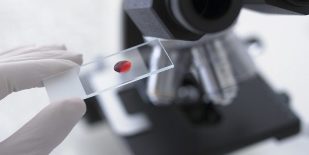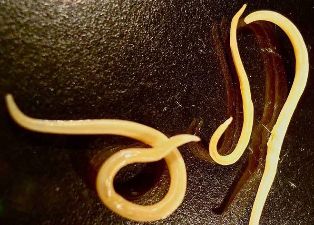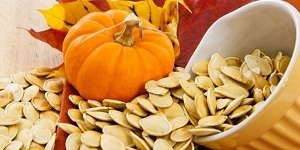Than to start treatment against parasites, it is important to determine exactly what exactly kind is present in the body. It is necessary to pick up effective treatment, because most of the drugs are specially designed to get rid of a specific type of worming. The main methods of diagnosis that allow to determine the causative agent of the disease:

- analysis of the fecal masses;
- analysis of blood: the common, as well as ELISA;
- pap;
- analysis of the secret 12-the earthy bowels;
- tomography;
- ULTRASOUND.
Parasites can be detected using blood tests. When one negative result of most of the examination is to be carried out repeatedly. It is necessary to obtain reliable results. If the results of the analyses confirmed the presence of worm infestations, it is important to immediately start treatment against worms. It includes 3 successive stages:
- The preparation of the body – drink sorbents, pumpkin oil, which activate the process of excrete the accumulated toxins. It takes 5-7 days.
- The use of anthelmintic drugs – it can be drops helena suspension designed to destroy specific types of parasites:
- From nematodes medication broad validity;
- The regeneration phase – it helps to restore the normal functioning of your body, the immune system. It is believed the consumption of sorbents, vitamin complexes, in some cases, are assigned different drugs.
Treatment for helminths should take place under the supervision of a physician. When it comes to infection of the conveyor worms and flukes, is the indicated therapy in the hospital. Pharmacological drugs are very toxic. After their consumption are strong side effects, their adoption is strictly forbidden to pregnant. In connection with this, many prefer to get rid of the worms using folk medicine. In his arsenal there are many recipes, whose effectiveness has been verified for centuries. A strong effect against the worms has a large number of herbs and plants: pumpkin, tansy, wormwood, Immortelle, flax, onions, garlic, nuts, pomegranates, carrots. On their basis, preparing decoctions, potions. Are intended for oral helena decontamination enema. The latest are designed to combat with worms, parasitic in the intestines. When choosing a method of treatment to pay attention to in the recipe is not restricted to plant components, to which you are allergic. To minimize the risk of infection with worms, it is important to continually observe preventive measures:
- washing hands before meals and after visiting the toilet, contact with animals;
- thoroughly wash and pour over boiling water, fruit, vegetables, herbs;
- expose enough cooked meat, fish;
- carry out de-worming pets.
For the prevention of parasites is always carefully wash your hands. At the first signs of helminths, even if it seems that you are nowhere couldn't become infected with worms, it is necessary to go to the doctor. This will determine the diagnosis, if necessary, selects the means for therapy against worms.
Are worms protozoa
Sometimes you can hear the phrase that the patient is infected with protozoa worms. You need to realize that the simplest – it is the solely single-celled microorganisms, which in the extreme case – those that provide the colony. But they will never many mobile, such as worms and helminths. In the simplest of all the processes occur within the cell cytoplasm and cell nuclei, while for worms the anatomical organization is much more complicated: they have differentiated organs that perform a specific physiological function. So the shift of worms to the simplest fundamentally wrong. Sometimes worming so-called protozoa parasites in comparison to insects: bedbugs, lice and other things, so as the last is worth a much higher evolutionary steps. In this exposition of worms protozoa home.
The most common parasites
The most common in endoparasites belong to the helminths (worms), which, according to various sources, infected more than 80% of the population of the planet. A huge number of these parasites are divided into basic types:
- hookworm – roundworm (ascaris, pinworms, Trichinella, whipworm, etc.);
- cestodes – tape worms (lantecy, pig and bullish tapeworm, tapeworm, etc.);
- flukes – worms-happiness (liver, blood, lung, as well as lucky, living in the intestine).
Sometimes you can stumble on more than the overall classification, according to which all types of parasites, people, are divided into:
- intestinal, parasitic in the intestines;
- cloth, localized in other organs and tissues.

Let's take a brief description of the most common types of de-worming.
Roundworms (hookworm)
- Ascaris – are the most common roundworms in lengths from 20 to 40 cm, are parasitic in the small intestine, but in advance of the move in the human body, hitting the circulatory system and the respiratory system. Along with the intestinal problems these parasites can occur in the liver and gall bladder, heart and lungs. A common symptom of ascariasis – an allergic reaction.
- Pinworms – small worms up to 1 cm, affecting the colon and see the in enterobiasis with impaired functioning of the digestive system, fatigue, sleep disorders, etc. the Characteristic sign of the presence of pinworms – itching in the anus, where they lay their eggs.
- Trichinella – these microscopic worms (their size is only a few millimeters) lead to the most difficult diseases – trichinosis, which no treatment can lead to death. Adults of the species inhabit in the body of the people in the muscles (respiratory, face, etc.), which causes muscle pain, fever, swelling, allergic rashes on the skin.
- Vlasoglavy – small worms (length up to 4.5 cm, the front part of your body in the form of a thread), the larvae of which cause trihozefalez with diarrhea, acute abdominal pain and other symptoms that resemble appendicitis. In consequence of the intoxication of the organism develops anemia.
Tape worms (cestodes)
- Broad tapeworm, the length of your body, which reaches up to 10 m, sees to the development of the difillobotrioz with nausea, weakness, vomiting, unstable chair, asthenia and anemia.
- The pig tapeworm has a length of from 3 to 8 m, the parasite mainly in the small intestine and causes two disorders: taeniasis with the dyspeptic, asthenic-neurotic and abdominal syndromes, and cysticercosis with ebrietas, intestinal, allergic, and respiratory syndromes. Depending on the localization of tsistitserki affects the muscles, brain, heart, eyes, etc.
- Bullish tapeworm whose length may reach up to 18 m, causes beef tapeworm infection, and is considered one of the most dangerous species of worms. If not do deworming, can live in the human body for up to 18-20 years! Localized in the large intestine, causes severe intoxication products of his life, as well as diarrhea, nausea, vomiting, abdominal pain, anemia, allergic reactions and problems with the nervous system.
- Dwarf tapeworm long, 1.5-5 cm, – the source of the gimenolepidoz with dyspeptic, pain and asthenic-neurotic syndromes, from which suffer particularly from the digestive and nervous system of your body, and also liver.
- Echinococcus is considered to be a small caterpillar worm – its length is only 2.5 to 8, rarely 9 mm, but the assault on them has dire consequences in the form of damage to the liver and lung where they form cysts and tumors, which cause dysfunction of these organs.
Worms-luck (flukes)
- Liver luck, helena liver Fluke shape resembles the leaf of a length of 30-50 mm and a width of 8-13 mm, has a suction cup. It damages the shell of the liver and blockage of the bile duct, it is able to completely block the flow of bile. Can cause cirrhosis, hepatitis and liver cancer.
- Cat (siberian) luck, helena cats, Fluke, flat worm length 4-13 mm. Localization – channels of the gallbladder, liver and pancreas. Causes opisthorchiasis with the development of gastritis, ulcers, pancreatitis, cholecystitis and up to the cancer of the liver, which can lead to deadly.
- Pulmonary luck has ovate-shaped, reddish-brown body with fine spines in lengths from 7.5 to 12 mm with a width of 4-8 mm. Affects the lungs, causing inflammation, exudative inflammation of the pleura, focal fibrosis and lung cancer. When the penetration into the brain causing inflammation and meningoencephalitis.
- Shistosoma (blood cells luck) – dioecious worms about the size of 1-2 cm, on the eggs, which cause enlargement of the liver, spleen and lymph nodes, the education of polyps in the intestines, diarrhea, granulomatous inflammation, which sees to bladder cancer.
Protozoa, parasites
Toxoplasma gondii (Toxoplasma gondii) – a kind of parasite, the primary host are cats. Also can be transmitted by warm-blooded animals and man. The disease, caused by the per-Toxoplasma is called toxoplasmosis. The course of the disease is moderate, with the exception of the slaughter of the fetus inside the mother's bosom in the time of pregnancy, which creates serious consequences, both for the mother and for the fetus, and even lethal outcome.
Amoeba is a simple single-celled organism that is considered to be one of the first creatures that lived on the Earth. The disease, caused by the amoeba, is called amoebiasis. Intestinal infection with the prevalent ulcerative lesions of the colon with the occurrence of bloody diarrhea, a possible education secondary intestinal bearing, which has a tendency to a chronic leak. Malaria Plasmodium – the most simple one cell being, in the cycle of development, which one is the temporary lord, and mosquito – constant. In the human body parasitic Plasmodium presented 4 types:
- P. malarie – four-day malaria;
- P. vivax — three-day malaria;
- P. ovale — a three-day ovale malaria;
- P. falciparum — a tropical malaria;
The length of the interval between the rising currents depends on the type of pathogen. In addition, everything develops anemia because the Plasmodium amazes blood cells red blood cells. The disease can take place both in light and in heavy form.
Paths of penetration into the organism:
- water – through the dirty water;
- contact – household use – when using items, clothes, dishes;
- alimentary – through the dirty vegetables, fruits, foods that have undergone heat treatment.
Sometimes it happens that the disk of the parasites is not sick, just a carrier, and excludes the originator to the external environment. For the development of the disease it is enough to contact with the human your body are just a few of the cysts of Giardia. Leishmania – representatives of this genus are the cause of leishmaniasis. Vector is mosquitoes. The main contingent of the lesion are humans, rodents, mammals. For the full development of the most serious pathogenic outbreaks in your body requires the presence of two masters. This mosquito and a representative of the vertebrates. Human disease caused by the invasion of Leishmania:
- visceral leishmaniasis (fever kala-Azar), the defeat of the internal organs;
- leishmaniasis of the skin (Baghdad ulcer) – the defeat of skin, most commonly of the head, with the subsequent formation of scars;
- leishmaniasis of the skin and mucous membranes – is manifested severe destructive damage to the skin and mucous membranes
- Prevention lies in the remediation of foci of breeding mosquitoes, rodents, control of the livestock dog, burying the corpses of dead animals.
Trichomonas – flagellates unicellular organisms in the shape of pears, causing the disease trichomoniasis, are transmitted through sexual contact and attack the urinary system. Noticeably, that the sick men and women, but in men the disease occurs usually asymptomatic. Trypanosoma – a genus of single-celled organisms, the simplest flagellates. Cause severe disease trypanosomiasis, a deadly to humans, are sleepy disease. Carrier of trypanosomes are bed bugs, tse-tse fly. In the body of the host the parasite is spread under the skin, then penetrates into the lymphatic system and blood circulation. Most of the pathogens are located in the spinal and brain, where it destroys cells and secrete their toxins.
Apartment helminths
Flat worms-parasites, helena luck (flukes), have a characteristic leaf shape of your body. The structure is sufficiently organised — they have a digestive, excretory and nervous system. In the course of the life cycle of change their masters. The spread of such species:
- Siberian Fluke (cat Fluke), helena opistorchis. The most common infection occurs through raw fish, which sees to the emergence of a quite dangerous disease — opisthorchiasis. Reproduction of the parasite takes place very rapidly, which can cause serious consequences. Worms have a yellowish tint, and the length may exceed 12 m. Secured in the human body, these parasites cause internal bleeding, violation of a sharp outflow, causing the dysfunction of the pancreas. Dangerous effects: cholangitis suppurative type, ahilii, cholangiocarcinoma.
- Liver Fluke. Intermediate hosts are representatives of the cattle, and man becomes infected by eating poorly processed meat of infected animals. As a result of infection develops the disease fascioliasis. According to the size of these worms is relatively small (no more than 5-6 cm), but are able to trigger dangerous pathology: hepatic abscesses, cholangitis, hepatitis. Through the blood, the larvae of the parasite can spread throughout the body.
- Shistosoma. The worm is able to settle down in the blood vessels, consumes the blood components. As a result of his life, perhaps, that the development of varicose veins of veins, the tumor formations. The main symptom — an intense general intoxication.
Bullish tapeworm
Bullish tapeworm can reach a length of up to 12 m. It is a hermaphrodite that can produce more than 100 000 eggs, which are excreted with the feces. The eggs get into the soil, then to plants, these plants her cattle. In the body of the animal, the eggs become larvae, which localized in the muscles. If a person uses food contaminated beef, the larvae get to the intestine. From person to person, the larvae are not transmitted.
Adult worms have a head with four suckers, uterine and body, consisting of segments. The number of segments is constantly growing, mature segments may detach from the worm and crawl from the intestines of a person out.
Bullish tapeworm: symptoms
Symptoms of illness is nausea, vomiting, dyspeptic disorders, increased salivation, dizziness, weakness, nervousness, rapid fatigue, pain in the abdomen of uncertain localization, allergies, changes in appetite.
In order to derive a bullish tapeworm from your body scheme is available, consisting of 3 stages: preparatory (cleansing your body), the treatment of anti-parasitic drugs, saving (diet, phytotherapy).
Helminths tapeworms

To helminths, belt type, helena on cestodes, include a variety of flat worms, the length can be from 2 mm to 10-12 m, the Body as parasites, has a special structure — the numerous segments, the neck and the head with suckers (hooks) for attaching to the walls. On a cestode — the hermaphrodite and the eggs are placed in the segments. The nutrients the worm is drawn through the entire surface of your body.
Tape worms
Are allocated to the following most common types of tape worms are:
- Alveolar. His activity makes the emergence of a very dangerous disease — of alveococcosis. Individuals may have a length of over 4 m Feature of these worms is education at the point of attachment of thick knots off-white color with a diameter of more than 2 cm, which resemble a malignant palatine. The most typical localization — the lungs, kidneys and liver. They are capable of inducing cholangitis and abscess, but also spread to the spleen, the muscles and the brain.
- Apni, helena tapeworm. Widespread are such varieties as bullish and pig tapeworm, broad tapeworm. They are characterized by huge size — more than 10 m, and a great life — more than 20 years. Bullish tapeworm excites diseases of the beef tapeworm infection and is placed, usually in the small intestine. Serious complications — cholecystitis, intestinal obstruction, appendicitis. The pig tapeworm a little less on your "brotherly" (length 2-3 m). It becomes the cause of teniasis. Broad tapeworm is manifested as pathology, as difillobotrioz. Assault them going through a mix of poorly cooked fish. This worm is able to lead to the following consequences: atrophy of the intestinal shell, glossitis Gunther, leukopenia.
Diseases that cause
The most dangerous parasites that live in the human body, they can trigger various diseases. Very often a disease, provoking a specific parasite, which bears the same name, as is he. So, different kinds of parasites in the human body can cause the following diseases:
- some of the parasites inside a human being (happiness) provoke the trematode;
- on cestodosis arise when the defeat of the conveyor worms;
- if in an adult helen of the child in the intestine are roundworms, then diagnosed with nematodes;
- leeches cause hirudins;
- Arctocephalus provoke skrebni.
However, parasites in the human body can hit even a single authority.

- The defeat of the eye;
- Diseases of the organs of the digestive system, which cause single-celled parasites and helminths, – ascariasis, trichinosis, hookworm, enterobiasis;
- Brain diseases – echinococcosis, toxoplasmosis;
- Dermatological disease – demodectic mange, lice, scabies;
- Pathology of the lungs – echinococcosis, ascariasis, etc.;
- Diseases of the liver – opisthorchiasis, echinococcosis;
- In the mouth, in the ear and oral cavity, parasites can cause different types of diseases;
- Pathology of the heart;
- Diseases of the genitourinary system;
- Pathology of blood vessels.
Drugs for the treatment of parasitosis
At present is developed large amount of drugs for the treatment of parasitosis. For the treatment of helminths used drugs large-scale events and with a narrow spectrum of activity. In addition to the data of medicines recommended intake of vitamins, drugs to restore the microflora of the colon. Contribute to the restoration of microflora and milk products bacterial, but not fungal starter culture. To prevent strong allergic symptoms using antihistamines and glucocorticoids. For the recovery of the digestion process it is sometimes helpful to take digestive enzymes, choleretic drugs. In the treatment of helminths it is necessary to take into account that the modern drugs significantly reduce the ability of deworming resist the digestive enzymes of your body, therefore, find deceased helminth during the emptying of the stool can far not always.
Folk remedies
- Papaya: the seeds of papaya is very useful for the treatment and the output of intestinal worms. In them is present caritin, which is effective for killing roundworms. Add one teaspoon of seed powder per cup of water helena milk and drink on an empty stomach in the morning, every day.
- Garlic: is very useful for the home treatment of intestinal worms. Eat three cloves of garlic every morning for best results.
- Carrots: it is very useful, how to get rid of tape worming. Enough to morning fasting a few tablespoons of grated carrots.
- Pumpkin: take about one tablespoon of the seeds of the pumpkin, clean from the transparent peel, chop and put into 250 ml of boiling water to the infusion. And then drink it to expel worms from the intestines
- Pomegranate: the bark, root and stems of the pomegranate is very effective in the destruction of worms
The most effective is the bark of the pomegranate. A cold decoction of the bark in a dose of 90 to 180 ml it is necessary to drink three times a day through the gap in one hour.
- Turmeric: dry powder helena juice, turmeric mixed with oil, milk helena water is very useful not only for worming, but also by problems with intestinal problems, especially chronic diarrhea.
- Tincture of birch leaves to the brandy. The third part of the dishes to fill the birch leaves, make up piled cognac and take three weeks. Then tincture strain, mix in equal proportions with the juice of beets, carrots and honey, mix. Take three times a day on 100 g of the resulting mixture for 30 minutes before a meal.
- Tincture of black poplar. Take 40 drops of tincture per 1 h before meals 3 times a day for 20-30 days.
- Infusion of corn stigmas. Take 10 g of corn stigmas pour 200 g of hot boiled water, insist. Drink 1-2 tablespoons 3-4 times a day.
- Powder from the seeds of flax and flower buds of cloves. This tool is beneficial in that it can be pour into the food.
- Pear juice with pulp from the fresh fruit carrot juice is recommended for the treatment of children. Drink 50 ml of the an empty stomach one hour before meals week, 10 days.
- The seeds of the pumpkin. Chewing the raw seeds need to fasting, together with a fine green thin skin (that's exactly what is different powerful de-worming properties). A daily dose of 250 to 400 g of seeds, after which in a few hours, it is necessary to drink a pill laxative. Duration of treatment is from 3 to 5 days.
- Tincture from ground fresh crusts pomegranate. Weight rind of 1 fetus pour boiling water (250 ml), insist in a thermos for 1.5 hours. Filter it. Dosage – fasting drink every 4 hours, before bedtime – a laxative.
- To 300 ml of water, you need 3 tsp of minced raw materials. Cook on low heat for 15 minutes, insist 2 hours, drain. Rate per day: 30 ml of 5 times.
- Infusion with a and wormwood. To 500 ml of water is taken 3 hr. l. the mixture powder is dried cauliflower (helena fresh mass). Boil 5 minutes, insist on cooling. Filtered. Accept it should not more than 50 ml per once, in the morning, at lunch, in the evening in the fasted state during the 5 days.
- Home of the trinity. The collection in the dry powder of equal parts of wormwood, spices and tansy use to 1 tsp 4 times fasting during the day, carefully as he ate, washed down with clean water.
- Garlic. For cleansing the body from parasites is necessary to a day, morning and evening empty stomach to eat without salt and bread, 2 — 4 cloves during the week.
- Ancient vermifuge miracle recipe: eat in the day off a herring salty and a big light bulb. More until the evening nothing to eat and drink can not be. Helminths in the evening massively climb from the intestine with the feces out.

Parasites do not tolerate paprika apartments red, sorrel, so it is necessary to include into the diet as often as possible. It treatment and prevention. In addition, during treatment it is necessary to exclude from the daily menu of sweet, fatty foods. As well as butter, milk, full-flavoured products, canned and smoked. Important when this method of treatment is the need to starve during the day and empty the intestines, take the compote of dried plums. The next day you need to drink three to four cups of the seeds of the pumpkin.
In the human body can detect a huge number of different worms-parasites capable of being secured in various internal organs. All cause chronic disease, which can cause serious pathology. Upon the occurrence of the symptoms of helminthiasis of any type, it is necessary to visit a doctor for initiation of adequate treatment.




























